David Shrigley: Lose Your Mind
David Shrigley is a master of scathing one liners, crudely composed drawings and a creator of strange and amusing objects.
CoCA, with the support of Lane Neave, is proud to present Lose Your Mind by wildly popular British artist David Shrigley, presented in partnership with the British Council. Known for his darkly witty cartoons, Shrigley’s international career has seen him work across a variety of media, including drawing, photography, sculpture, animation, painting, unsettling intervention, spoken-word recordings and pop-music videos.
The British artist's work gained further profile in 2016 after winning the commission for the Fourth Plinth in London’s Trafalgar Square. In September he unveiled his bronze sculpture Really Good, a ten-metre-high hand giving a thumbs up.
David Shrigley: Lose Your Mind, a British Council exhibition, shows the breadth of Shrigley’s practice and his darkly witty imaginings. Amongst drawing, sculpture and animated film, key works include Ostrich, 2009, in which a taxidermied bird loses its head; Beginning, Middle and End, 2009, a ‘giant continuous sausage’ crafted from clay that is rolled out and arranged in the gallery; and Cheers, 2007 a pair of fishing waders filled with expanding foam.
With a sense of humour that crosses cultural and language boundaries with ease, David Shrigley: Lose Your Mind is an opportunity to have fun and feel better for it. You will almost certainly laugh, but expect to feel a little unsettled. Shrigley’s work is playful, but it’s challenging too.
The exhibition comes to Christchurch from Seoul, Korea, where the season was extended to satisfy public demand.
Admissions information:
Entry $10
Full-time Student (with ID) / Senior Citizen (65 yrs +) $8
Under 12s and Friends of CoCA FREE
Free entry for ALL every Tuesday.
Become a member today and get FREE entry to this exhibition, as often as you like.
The Artist
-
David Shrigley

David Shrigley
United Kingdom
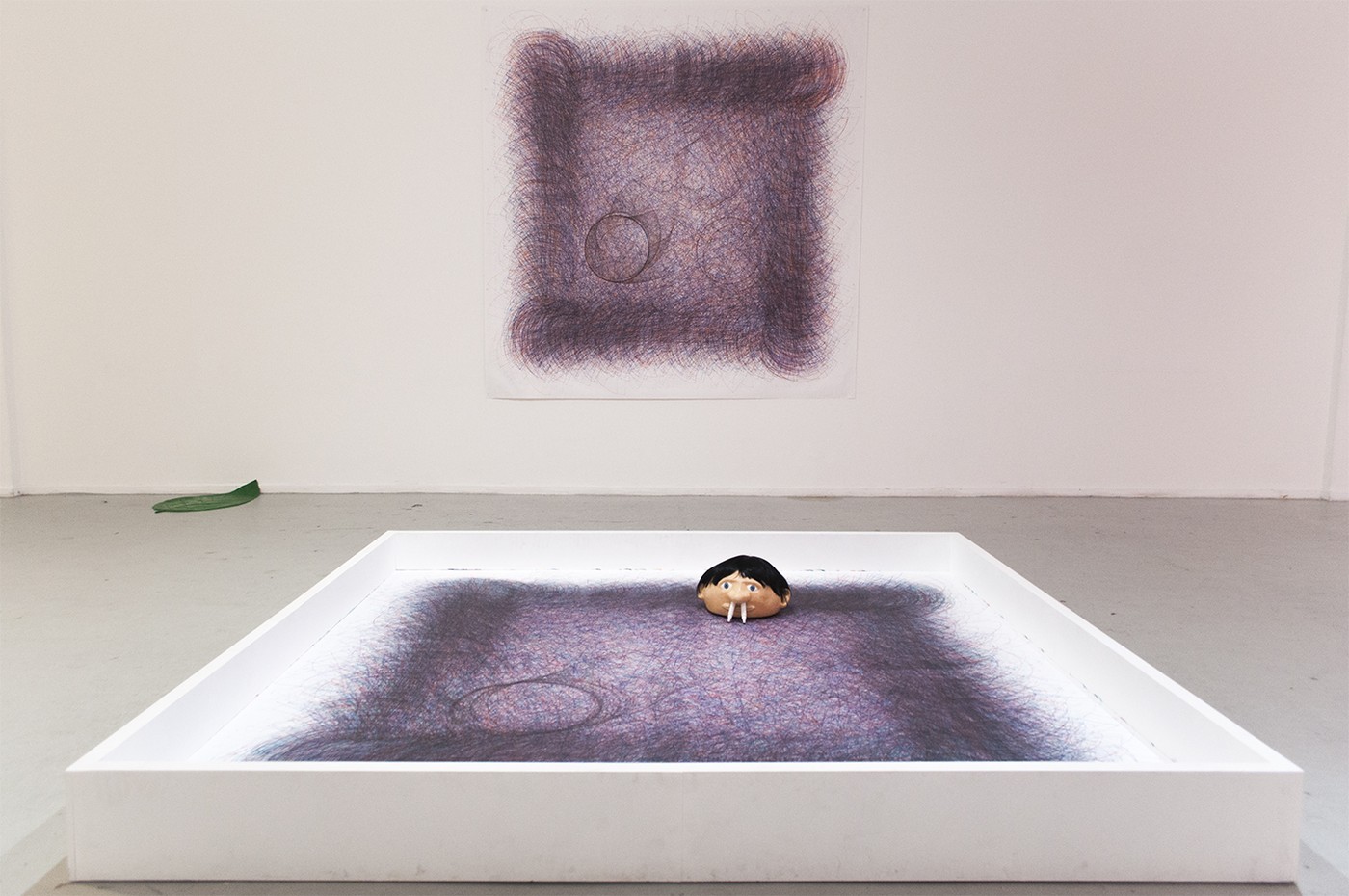
David Shrigley: Lose Your Mind. The artist, 2014 at Instituto Cultural Cabañas, Guadalajara, Mexico, November 2015. © David Shrigley. Courtesy of Instituto Cultural Cabañas and British Council. Photo by Marcos García
The Artist, David Shrigley
More about this artworkIn this work, a disembodied creator – literally a head in a cheap wig – zooms around a blank canvas, drawing and circling via the mechanism of a simple engine and two marker pens housed within its funny, flaring nostrils.
We might wonder if this robot artist represents Shrigley’s alter ego. Perhaps Shrigley was inspired by the Surrealist concept of automatism, in which the artist suppresses his reason and active decision-making to work via the unconscious mind. This idea of an artist who simply draws whatever passes through his head is realised here with comedy and bite.
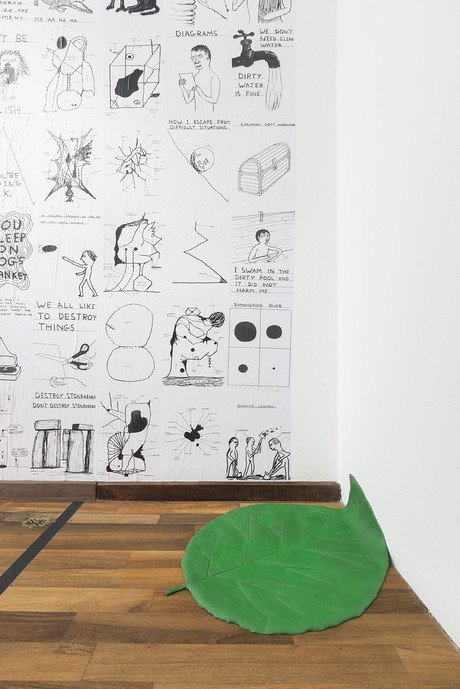
David Shrigley: Lose Your Mind. New Leaf, 1995 at Instituto Cultural Cabañas, Guadalajara, Mexico November 2015. Courtesy of Instituto Cultural Cabañas and British Council. Photo courtesy of Mr. Marcos García
New Leaf, David Shrigley
More about this artworkDavid Shrigley was born in 1968 in Macclesfield, UK. He is now based in Brighton, England.
The artist has a distinctive drawing style and works that make satirical comments on everyday situations and human interactions. His quick-witted drawings and hand-rendered texts are typically deadpan in their humour and reveal chance utterings like snippets of over-heard conversations.
Re-occurring themes and thoughts pervade his storytelling capturing childlike views of the world, the perspective of aliens and monsters or the compulsive habits of an eavesdropper shouting out loud.
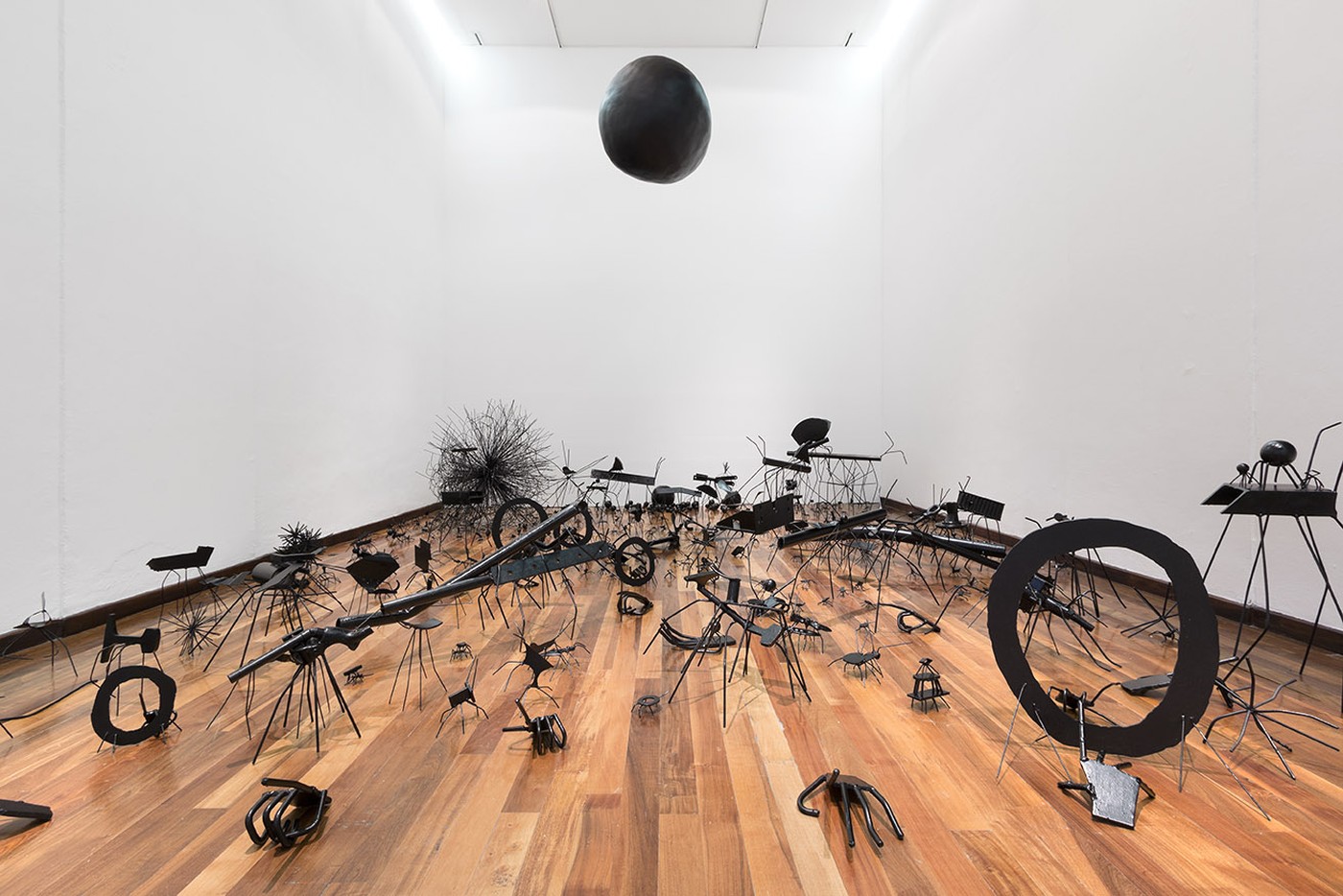
David Shrigley: Lose Your Mind. Insects, 2007 at Instituto Cultural Cabañas, Guadalajara, Mexico, November 2015. © David Shrigley. Courtesy of Instituto Cultural Cabañas and British Council. Photo by Marcos García
Insects, David Shrigley
More about this artworkWith their thin legs and spiky extremities, this cluster of shapes may at first glance appear to be creatures on the march or an animal swarm.
Closer inspection of the various individual elements reveals that these are not strict representations or recognisable reproductions of existing things; instead they form a tiny universe that has sprung from the artist’s imagination.
This installation comprises 413 components which when collected together also give the impression that Shrigley’s crude and funny drawings have come to life as three-dimensional figures.
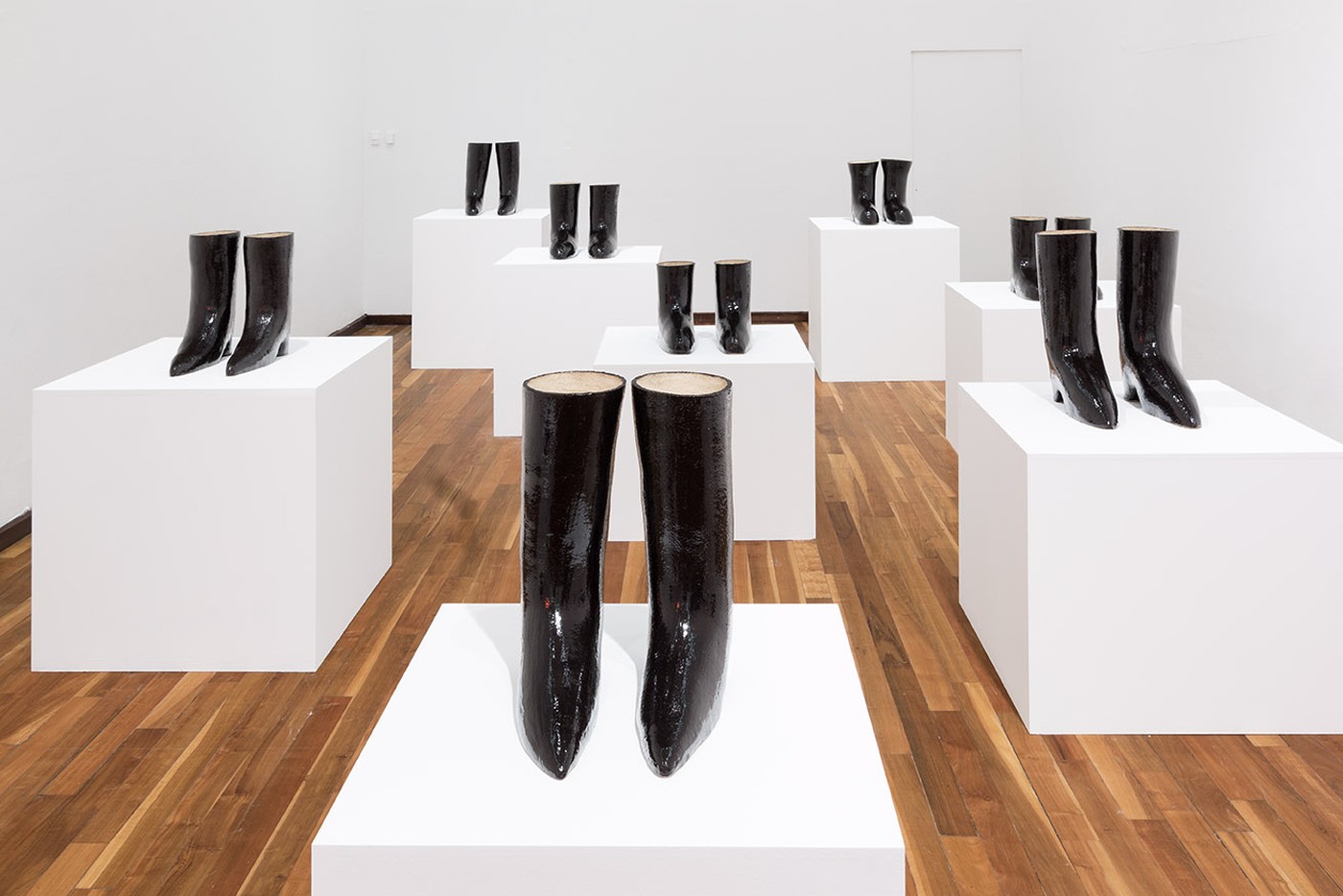
David Shrigley: Lose Your Mind. Boots at Instituto Cultural Cabañas, Guadalajara, Mexico, November 2015. © David Shrigley. Courtesy of Instituto Cultural Cabañas and British Council. Photo by Marcos García
Boots, David Shrigley
More about this artworkThe simple shape and pleasing variation of these ten pairs of ceramic boots invites various associations – from the craft tradition to figurative sculpture to cartoons. The mode of display equally evokes the retail space of a shoe store and the presentation of relics and fine artworks within a museum. Here is an example of Shrigley finding absurdity and humour within the everyday and inviting multiple interpretations of his work.
David Shrigley: Lose Your Mind. Cheers, 2007 at Instituto Cultural Cabañas, Guadalajara, Mexico, November 2015. © David Shrigley. Courtesy of Instituto Cultural Cabañas and British Council. Photo by Marcos García
Cheers, David Shrigley
More about this artwork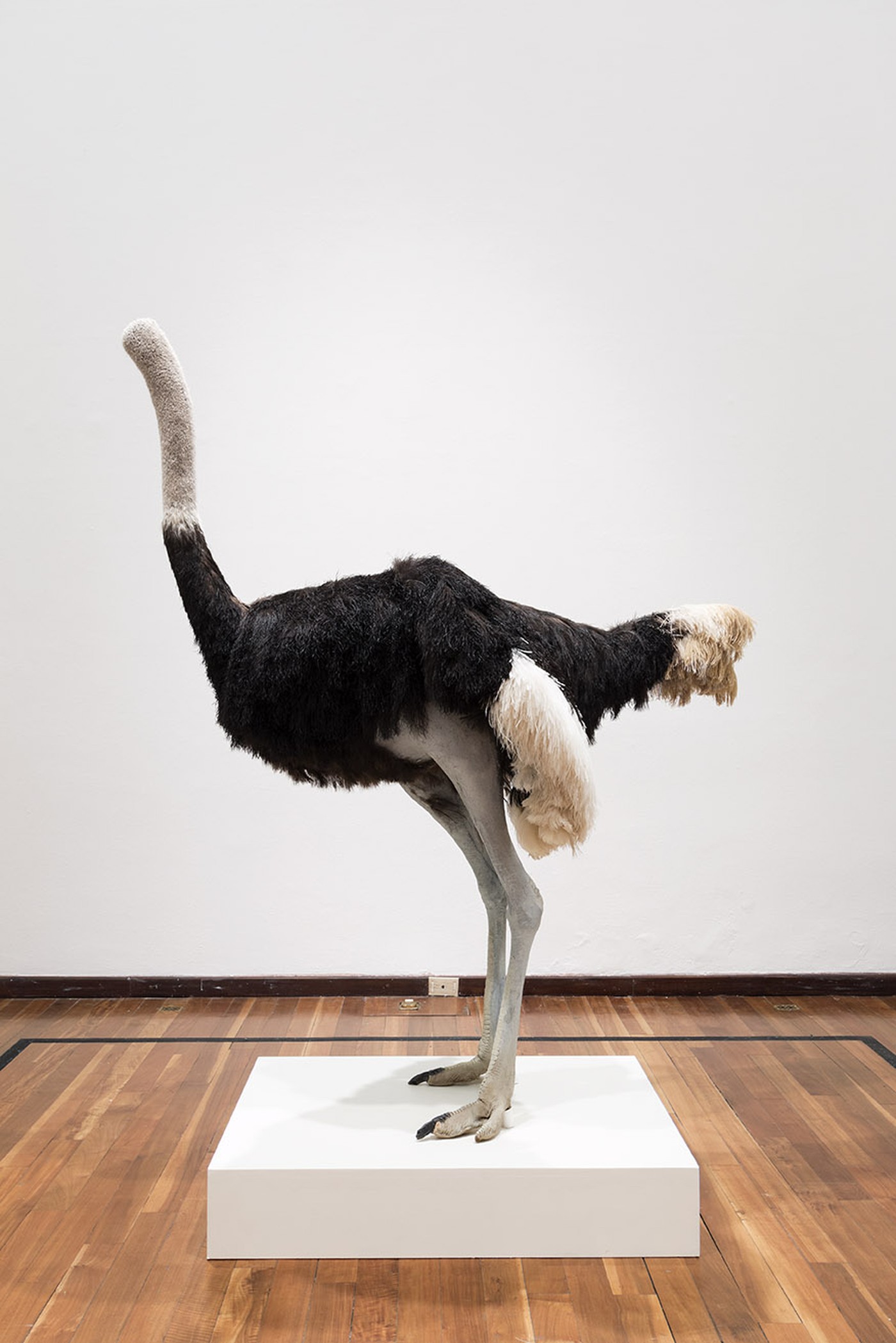
David Shrigley: Lose Your Mind. Ostrich, 2009 at Instituto Cultural Cabañas, Guadalajara, Mexico, November 2015. © David Shrigley. Courtesy of Instituto Cultural Cabañas and British Council. Photo by Marcos García
Ostrich, 2009, David Shrigley
More about this artworkIn Ostrich, 2009, a real taxidermied bird has lost his head but gained an absurd menace. This artwork invites us to think about life, death and our relationship with the animal world.
Ostrich is Shrigley’s largest work of taxidermy to date; it is, however, one of several headless specimens that the artist has created, including a headless cat and a headless monkey. For Shrigley the proposition is about an animal that ‘doesn’t have a head and doesn’t have a brain; it never had one and doesn’t need one’. Curator Katrina Schwarz has described this work as the starting point for the planning of the exhibition ‘Lose Your Mind’ and indeed Ostrich has been acquired for the British Council Collection. It is an appropriately absurd fate for Shrigley’s work: a flightless bird, by virtue of entering a touring collection, is now destined to fly the world!
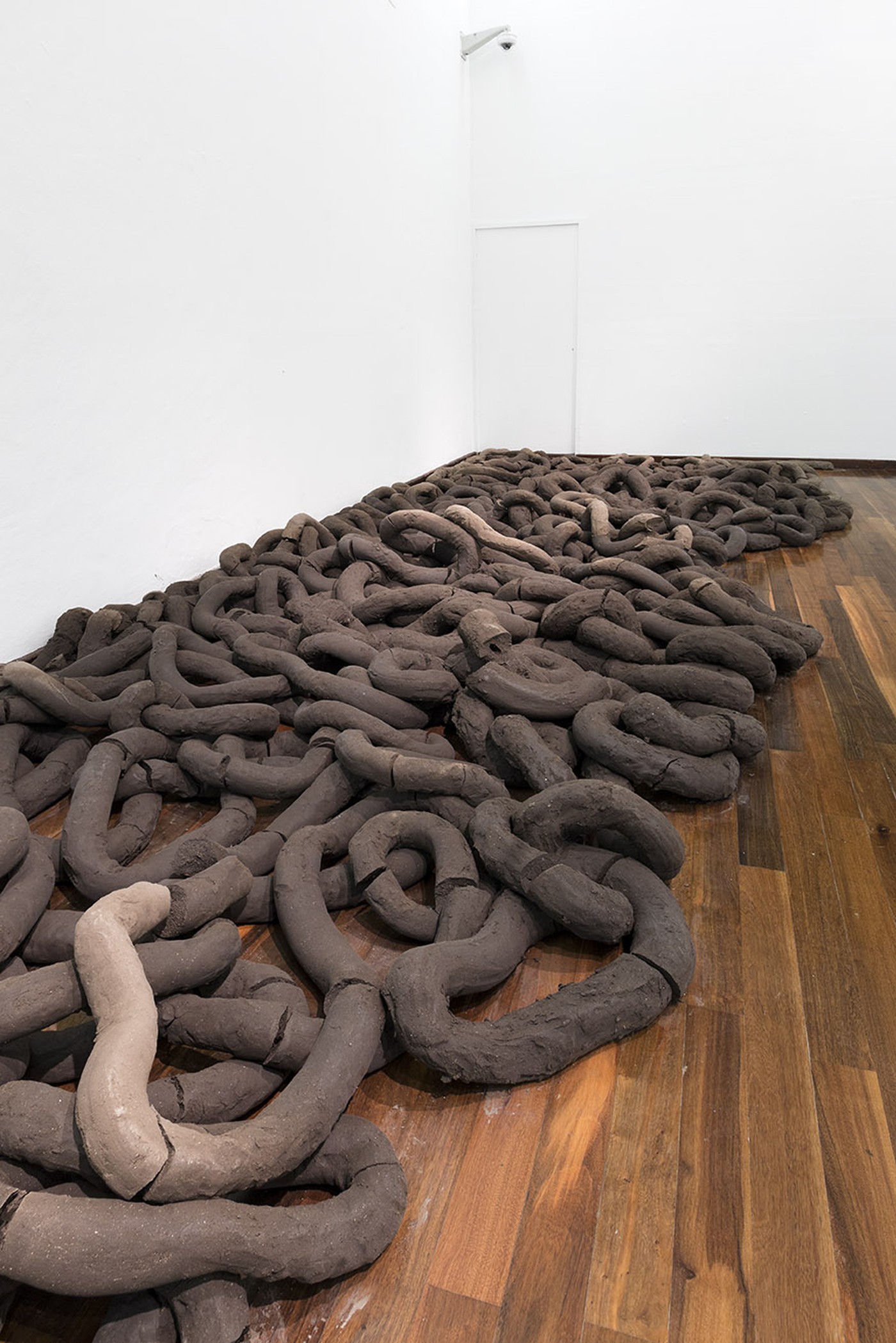
Beginning, Middle and End, David Shrigley
More about this artwork
Describing Beginning, Middle and End, continuous looping clay formed on site at the exhibition venue, Shrigley has said “Maybe it’s a metaphor for life: a very short beginning, a very short end, and a huge middle bit where lots of stuff seems to be happening.”
The work is made from 2000kg of clay and was created with the participation of numerous volunteers. This process shares a quality with other Shrigley projects in which he contradicts or wittily ridicules the concept of the artist as sacred or superior.
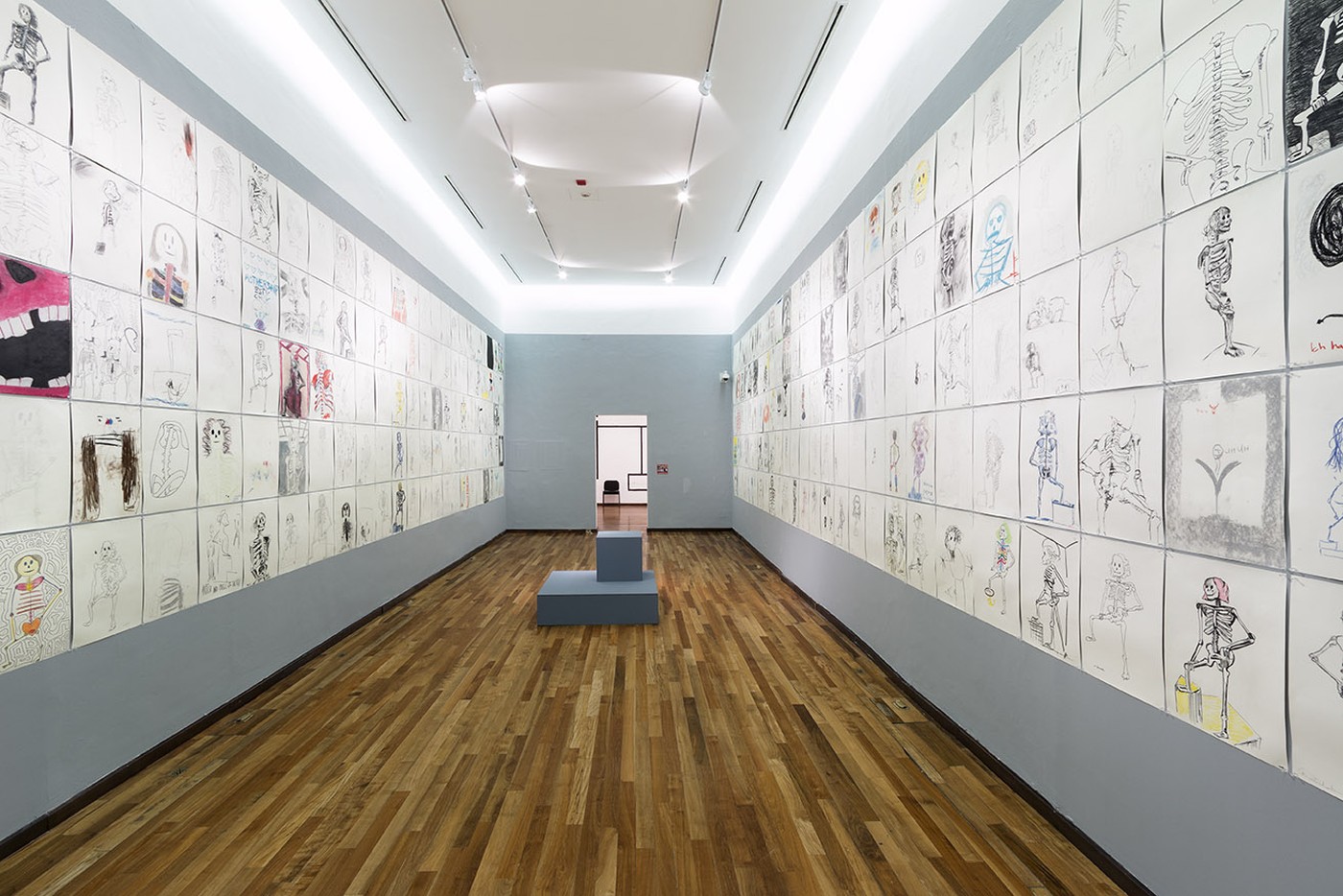
The Spectre, 2014, David Shrigley
More about this artwork
The Spectre, 2014, of the title refers to a secret sculpture – a sculpture that is not exhibited here and indeed which no longer exists. All that remains of the original sculpture is an empty plinth and 298 drawings that testify to its existence and gives us more than a good idea of what the sculpture looked like. Originally created for an exhibition at the Pinakothek der Moderne, Munich in 2014, the sculpture was kept in a locked room in the gallery for ten days and was drawn by 100 selected people - children and adults, amateurs and professionals. No photographs of the sculpture were allowed to be taken and it was subsequently destroyed, making the drawings seen in the exhibition is the lasting relic and only evidence of the work.
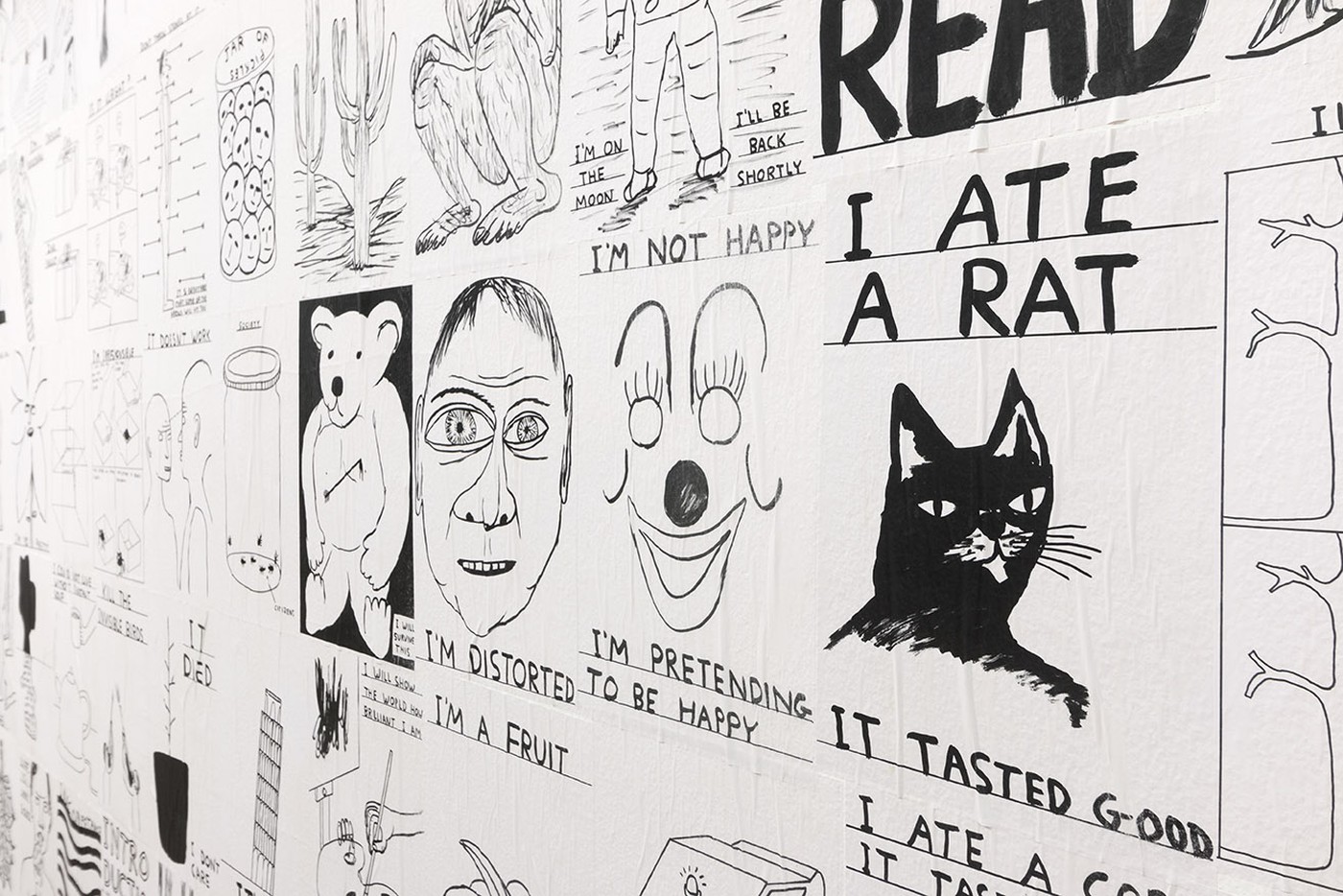
Untitled Drawings, David Shrigley
More about this artworkThis installation of inkjet prints has been selected from an archive of over 1000 drawings that David Shrigley worked on for a full decade (2004-2014). These doodle-like images are the works for which Shrigley is best known and the artist’s view on life is expressed in their dark humour and cynical wit. The drawings are also powerful in their ability to evoke empathy and recognition from all who experience the frustrations and contradictions of life.

David Shrigley: Lose Your Mind. Death Gate at Instituto Cultural Cabañas, Guadalajara, Mexico, November 2015. © David Shrigley. Courtesy of Instituto Cultural Cabañas and British Council. Photo by Marcos García

